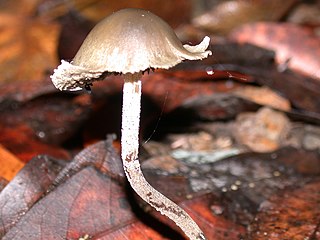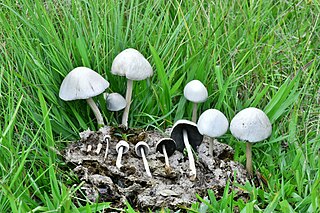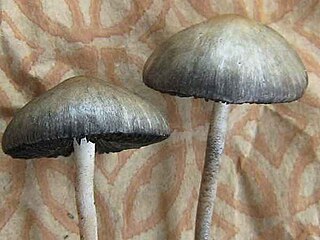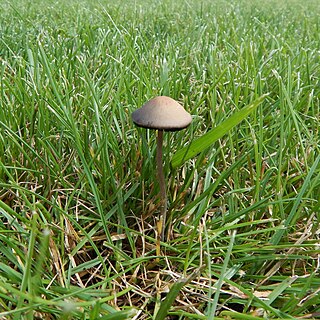The following is a list of the about 98 Panaeolus mushroom species: [1]

- Panaeolus acidus
- Panaeolus acuminatus
- Panaeolus affinis
- Panaeolus africanus , psychoactive
- Panaeolus albellus
- Panaeolus albidocinereus
- Panaeolus albovelutinus
- Panaeolus alcis
- Panaeolus alveolatus
- Panaeolus annulatus
- Panaeolus anomalus
- Panaeolus antillarum
- Panaeolus atomatus
- Panaeolus atrobalteatus
- Panaeolus axfordii , psychoactive
- Panaeolus bernicis
- Panaeolus bisporus , psychoactive
- Panaeolus bolombensis
- Panaeolus bubalorum
- Panaeolus cambodginiensis , psychoactive
- Panaeolus campanulatus (= Panaeolus papilionaceus accepted name)
- Panaeolus campanuloides
- Panaeolus castaneifolius (= Panaeolus olivaceus accepted name), psychoactive
- Panaeolus cinctulus (Bolton) Britzelm., psychoactive
- Panaeolus chlorocystis
- Panaeolus cinereofuscus
- Panaeolus clelandii
- Panaeolus conicodiffractus
- Panaeolus convexulus
- Panaeolus cyanescens , psychoactive
- Panaeolus deviellus
- Panaeolus diffractus
- Panaeolus digressus
- Panaeolus eburneus
- Panaeolus epimyces
- Panaeolus expromptus
- Panaeolus exsignatus
- Panaeolus fimbriatus
- Panaeolus fimicola , psychoactive compounds in small amounts
- Panaeolus fimicoloides
- Panaeolus fimiputris
- Panaeolus foenisecii
- Panaeolus fontinalis
- Panaeolus fraxinophilus
- Panaeolus georgii
- Panaeolus gomphodes
- Panaeolus goossensiae
- Panaeolus griseofibrillosus
- Panaeolus guttulatus
- Panaeolus hippophilus
- Panaeolus hygrophanus
- Panaeolus hypomelas
- Panaeolus incanus
- Panaeolus indicus
- Panaeolus intermedius
- Panaeolus lentisporus
- Panaeolus lerchenfeldii
- Panaeolus leucophanes
- Panaeolus lignicola
- Panaeolus linnaeanus
- Panaeolus longiguus
- Panaeolus microsporus Ola'h & Cailleux, psychoactive
- Panaeolus moellerianus Singer, psychoactive
- Panaeolus niveus
- Panaeolus obtusisporus
- Panaeolus olivaceofuscus
- Panaeolus olivaceus F.H. Møller, psychoactive
- Panaeolus ovatus
- Panaeolus paludosus
- Panaeolus panaiensis
- Panaeolus papilionaceus
- Panaeolus papilionaceus var. papilionaceus (Bull.) Quél., psychoactive
- Panaeolus pseudopapilionaceus
- Panaeolus pumilus
- Panaeolus pusillus
- Panaeolus queletii
- Panaeolus refellens
- Panaeolus regis
- Panaeolus remotus
- Panaeolus remyi
- Panaeolus reticulatus
- Panaeolus retirugis , (Fr.) Quél. (= Panaeolus papilionaceus accepted name)
- Panaeolus rubricaulis
- Panaeolus rufus
- Panaeolus semiglobatus
- Panaeolus semilanceatus
- Panaeolus semiovatus
- P. sepulchralis
- P. solidipes, edible [2]
- P. sphinctrinus (= Panaeolus papilionaceus accepted name)
- P. squamulosus
- Panaeolus subbalteatus (= Panaeolus cinctulus ), psychoactive
- P. subditus
- P. subfirmus
- P. teutonicus
- P. texensis
- P. tirunelveliensis
- P. tropicalis , psychoactive
- P. uliginicola
- P. uliginosus
- P. variabilis
- P. venenosus
- P. venezolanus
- P. westii












